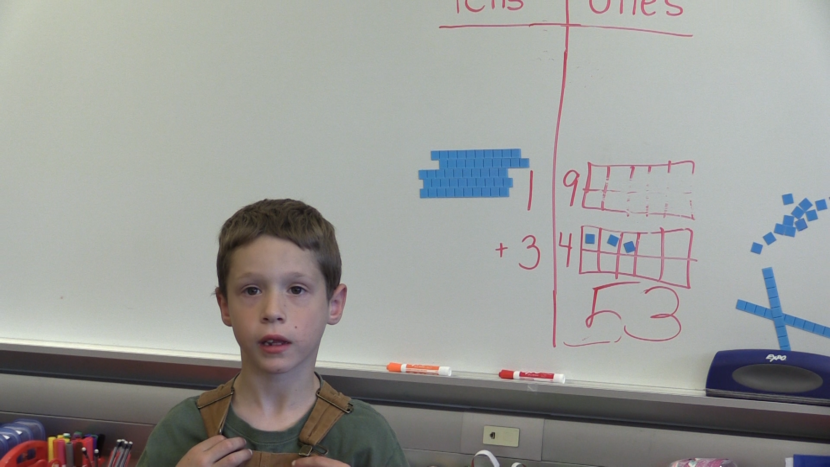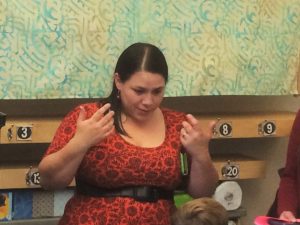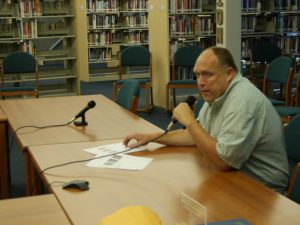
(Photo by Quinton Chandler, KTOO – Juneau)
“Nineteen plus 34. Can you do it?” Tia Vreeland, a kindergarten and first-grade teacher at Glacier Valley Elementary School, asked her former student, Eli Wyatt.
Eight-year-old Eli is in second grade. He made a return visit to Vreeland’s classroom to prove second-graders can add double digit numbers.
This is the fifth year of a six-year curriculum review in the district and it is rethinking how hard it should make its classes.
Adding double digit numbers in first grade is a direct result of the district’s adoption of new core curriculum standards from the state in 2012.
That’s why Eli’s class had to learn last year. Vreeland had Eli demonstrate with magnets on a whiteboard. Some look like sticks and the others are what Vreeland calls “dot” magnets.
They have number values. One stick equals ten.
Vreeland asked Eli to find the answer to the problem 19 plus 34 with the magnets.
She watched him add up his magnets and use them to show how to get the answer: 53.
In the end Eli has five of the stick magnets and three of the dots.
Vreeland said this strategy is supposed to help kids understand the meaning behind addition and subtraction rules like carrying and borrowing.
“I take seven ones, I take eight ones, I put them together and if, ‘Oh it’s over 10,’ I need to regroup,” Vreeland said. “(I) clear my board, and get a 10 so that they can see and touch and feel and understand what that magic one, what I considered a magic one – why it moves over to the next place and that is the value of a 10.”

Vreeland wants her students to understand how the numbers they’re using relate to each other so it’s easier for them to do math in their heads.
“(That’s) instead of trying to hold everything in their head like, ‘OK, I need to take this one and my ones place is only four and I need to do this with my 10,’” Vreeland said.
Using the sticks and the dots in her lessons isn’t new for Vreeland. What is new is using them to teach first-graders to add double digit numbers.
The new state standards cover English language arts and math.
Ted Wilson, director of teaching and learning support for the district, said its core curriculum is the set of academic goals students are required to reach. He said the math has gotten harder.
“In general the standards were a year ahead of where each grade level was at – starting at kindergarten and going through ninth grade, when they first enter Algebra 1,” Wilson said.

Wilson said the higher standards make the kids learn more complicated math, but they’re also supposed to make them more comfortable with numbers.
“So taking numbers apart, putting them back together,” Wilson said. “Understanding how they relate to each other so when you get to more advanced math later on, you have that foundation of, ‘I get how numbers work.’”
By the time they hit third grade Wilson said the kids will start learning how to multiply and divide. They’ll even be introduced to fractions and decimals which kids used to see around fifth grade.
It’s similar for reading standards. Wilson said in the past, elementary kids mostly read narrative stories. Now, they’re being introduced to more nonfiction and they have to answer tougher questions to strengthen their critical thinking skills.
Wilson said in addition to the new state standards the district is also implementing national standards for other subject areas, like world language, social studies and music.
“And in fact this coming year, we’re working on the science curriculum, and so that will be the next subject that jumps up from the previous standards,” Wilson said.
Once the district finishes with science it will be done with the six-year curriculum review, and then they will start a new review cycle with math .
But, Wilson doesn’t think they’ll change the standards again.
They need to make sure the standards line up at each grade level so second-graders like Eli won’t have trouble walking across the hall into third grade.
Quinton Chandler is a reporter at KTOO in Juneau.




